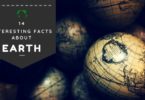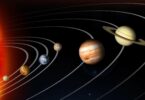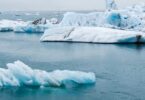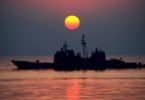Geology and Earth Science Quiz for Kids:
Measuring from the closest point of each of these countries to the Equator, which is the furthest from the Equator?
(a) South Africa
(b) Ecuador
(c) Ethiopia
(d) Canada
Why does the Earth have its atmosphere?
(a) Winds
(b) Clouds
(c) Gravity
(d) Rotation of the Earth
The ozone layer is formed due to reactions of:
(a) oxygen and ultraviolet rays
(b) carbon dioxide and layers of the atmosphere
(c) cosmic rays and layers of atmosphere
(d) infrared rays and ultraviolet rays
Atmospheric pressure exerted on earth is due to:
(a) rotation of earth
(b) revolution of earth
(c) gravitational pull
(d) uneven heating of the earth
The Coriolis Force is absent along the
(a) Polar region
(b) Pole
(c) Equator
The zone of Earth’s atmosphere immediately above its surface up to a height of about 16 km above the Equator and 8 km over the poles is known as __
(a) Mesosphere
(b) Thermosphere
(c) Troposphere
(d) Stratosphere
Related: United States presidents in chronological order
The uppermost layer of the Earth’s crust, which is capable of supporting life, is called
(a) Biosphere
(b) Lithosphere
(c) Hydrosphere
(d) Stratosphere
What is the name for the circle that describes the most northerly point at which the Sun appears directly overhead at noon?
(a) The Equator
(b) Tropic of Capricorn
(c) The ecliptic
(d) Tropic of Cancer
The word Biosphere refers to:
(a) Zone of soil, water, and air around the earth capable of supporting flora and fauna.
(b) Part of the earth surface that can support the flora
(c) Parts of air around the earth where life can exist
(d) Zone of water on earth which can support life.
Which of the following latitude passes through Asia?
(a) Tropic of Capricorn only
(b) Tropic of Cancer only
(c) Equator only
(d) Tropic of Cancer and Equator only
The polar Easterlies lie at
(a) 0-30o latitude
(b) 30-60o latitude
(c) 60-90o latitude
(d) 90o latitude
The ozone layer lies in the
(a) Troposphere
(b) Tropopause
(c) Stratosphere
(c) Photosphere
Related: Quiz on Light Polarization
The hypothesis that there are episodes in Earth’s history when it became completely frozen, including at the Equator, is referred to as what?
(a) Snowball Earth
(b) Snowman Earth
(c) Giant Ice
(d) The Total Freeze
Name the layer which makes radio communication possible on the earth.
(a) Ionosphere
(b) Stratosphere
(c) Troposphere
(d) Lithosphere
The most abundant element in the earth’s crust is
(a) Sodium
(b) Potassium
(c) Oxygen
(d) Silicon
The Equator represents
(a) line joining the North and South poles
(b) imaginary line passing around the Earth midway between the North & South poles
(c) a ring around the planet Saturn
(d) the axis of rotation of Earth
The lowest layer of the atmosphere is.
(a) Stratosphere
(b) Thermosphere
(c) Troposphere
(d) Mesosphere
Related: mcqs on Carboxylic Acids and their derivatives
The rotational motion of the earth is maximum at the—
(a) North pole
(b) Tropic of Capricorn
(c) Equator
(d) Tropic of cancer
Mention the ray which appears to originate outside the earth.
(a) cosmic ray
(b) the ultra-violet ray
(c) the alpha ray
(d) the beta ray
What is the angle made by the axis of the Earth with its orbital plane?
(a) 10
(b) 33
(c) 66
(d) 15
Atmospheric temperature increasing at higher altitudes is called
(a) Radiation
(b) Inversion
(c) Conduction
(d) Convection
The right ascension is the equivalent of longitude on the celestial sphere, and it is given in the units of
(a) degrees
(b) time-hours, minutes, and seconds
(c) only hours
(d) only seconds
Related: North America quiz
A difference of 1 degree in longitude at the Equator is equivalent to nearly:
(a) 101 km
(b) 111 km
(c) 121 km
(d) 125 km
The Earth completes one rotation on its axis.
(a) 23 hours 30 minutes
(b) 23 hours 55 minutes 49 seconds
(c) 24 hours
(d) 23 hours 10 minutes 2 seconds
Which of the following is most useful for measuring the shortest distance between two places on the earth and the path between them?
(a) Atlas map
(b) Thematic maps
(c) Wall maps
(d) Globe
The rotational motion of the earth is maximum at the—
(a) North pole
(b) Tropic of Capricorn
(c) Equator
(d) Tropic of cancer
Days and nights are caused by
(a) Rotation of earth on its axis
(b) Revolution of earth
(c) Rotation and revolution of the earth
Related: Human Health and Disease online test
What causes a change in the seasons on Earth?
(a) Rotation
(b) Revolution
(c) Rotation and Revolution both
Why are winters more severe in the Southern Hemisphere than in the Northern Hemisphere?
(a) Earth is tilted towards the Sun in the Northern Hemisphere
(b) Northern Hemisphere receives more sunlight
(b) Because of more iceberg activity in the Southern Hemisphere
(d) Southern Hemisphere is less inhabited
Longitude measures the angular distance, expressed in degrees of a point on the Earth’s surface:
(a) east or west of the prime meridian
(b) north or south of the Equator
(c) only east of the prime meridian
(d) only west of the prime meridian
The troposphere is the hottest part of the atmosphere because
(a) it is closest to the Sun
(b) there are charged particles in it
(c) the Earth’s surface heats it
(d) heat is generated in it
The Earth rotates by what degree in four minutes
(a) 4 degree
(b) 10 degree
(c) 36 degree
(d) 1 degree
Related: Branches of Science with definition
Blizzards are characteristic features of _
(a) equatorial region
(b) tropical region
(c) Antarctic region
(d) temperate region
Which is the only continent through which the Cancer, Equatorial, and Capricorn pass?
(a) Australia
(b) South America
(c) Asia
(d) Africa
Which imaginary line running on the globe divides into two equal parts
(a) Tropic of Cancer
(b) Tropic of Capricorn
(c) Equator
The temperature increases rapidly above
(a) Ionosphere
(b) Exosphere
(c) Stratosphere
(d) Troposphere
What is the period of rotation of Earth around its axis is called
(a) Day time
(b) Rotation period
(c) Daily Motion
Related: General Questions about Animals
The deflection of the winds to the right in the northern hemisphere is caused by:
(a) revolution of the earth
(b) rotation of the earth
(c) uneven heating of the earth
The change of seasons is caused by
(a) Rotation of Earth
(b) Revolution of Earth
(c) Rotation and revolution of Earth
Which of the following inert gases is not found in the atmosphere?
(a) Xenon
(b) Argon
(c) Helium
(d) Radon
What is the correct order of our atmospheric layers?
(a) Troposphere, Ozonosphere, Mesosphere, Thermosphere
(b) Troposphere, Stratopause, Tropopause, Thermosphere
(c) Ozonosphere, Tropopause, Mesopause, Thermosphere
(d) Tropopause, Biosphere, Thermosphere, Atmosphere
The water of primitive ocean during the time of ‘Origin of Life’ has been called “hot dilute soup of organic substances” by
(a) Sidney Fox
(b) Miller
(c) Oparin
(d) Haldane
Related: multiple choice questions on insects
The primitive earth conditions were experimentally shown by
(a) Oparin
(b) Urey
(c) Miller
(d) Both (b) and (c)
The line on a map connecting points of equal temperature at a given time is
(a) Isohyet
(b) Isobar
(c) Isthumus
(d) Isotherm
The phenomenon of “Industrial melanism” demonstrates
(a) Natural selection
(b) Induced mutation
(c) Reproductive isolation
(d) Geographical isolation
On 22nd December, which places have the largest day and shortest night?
(a) Melbourne
(b) Moscow
(c) Madrid
(d) Chennai






